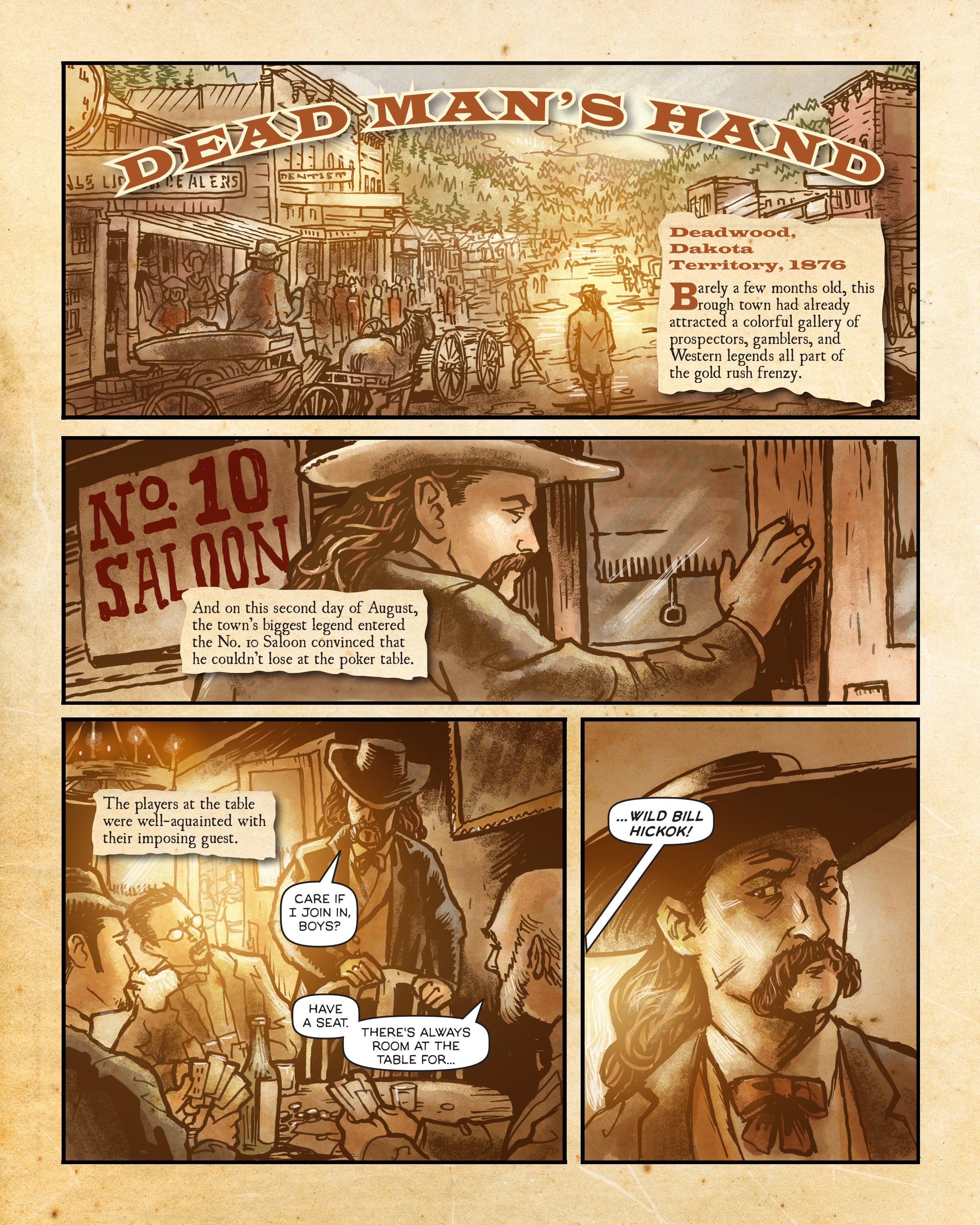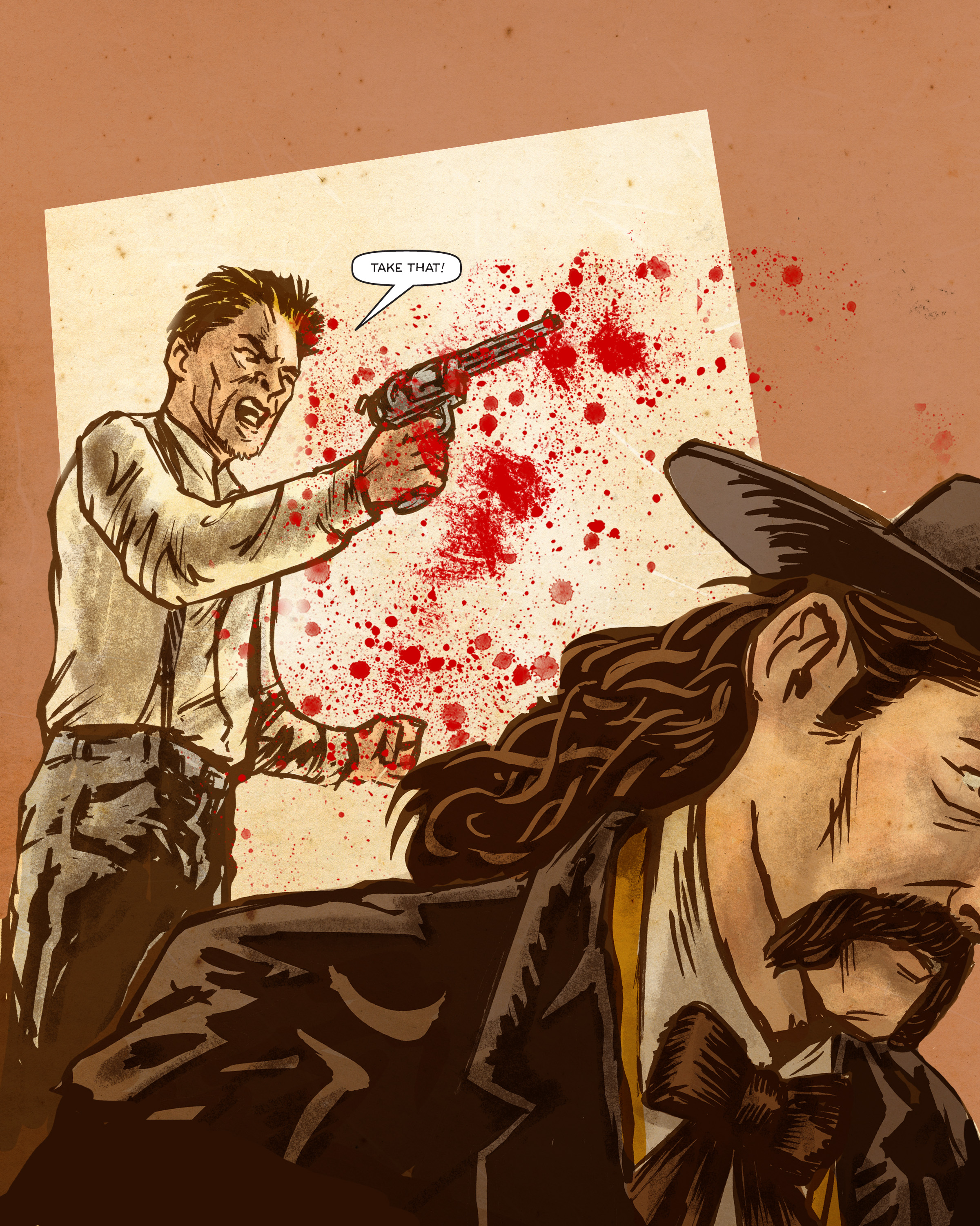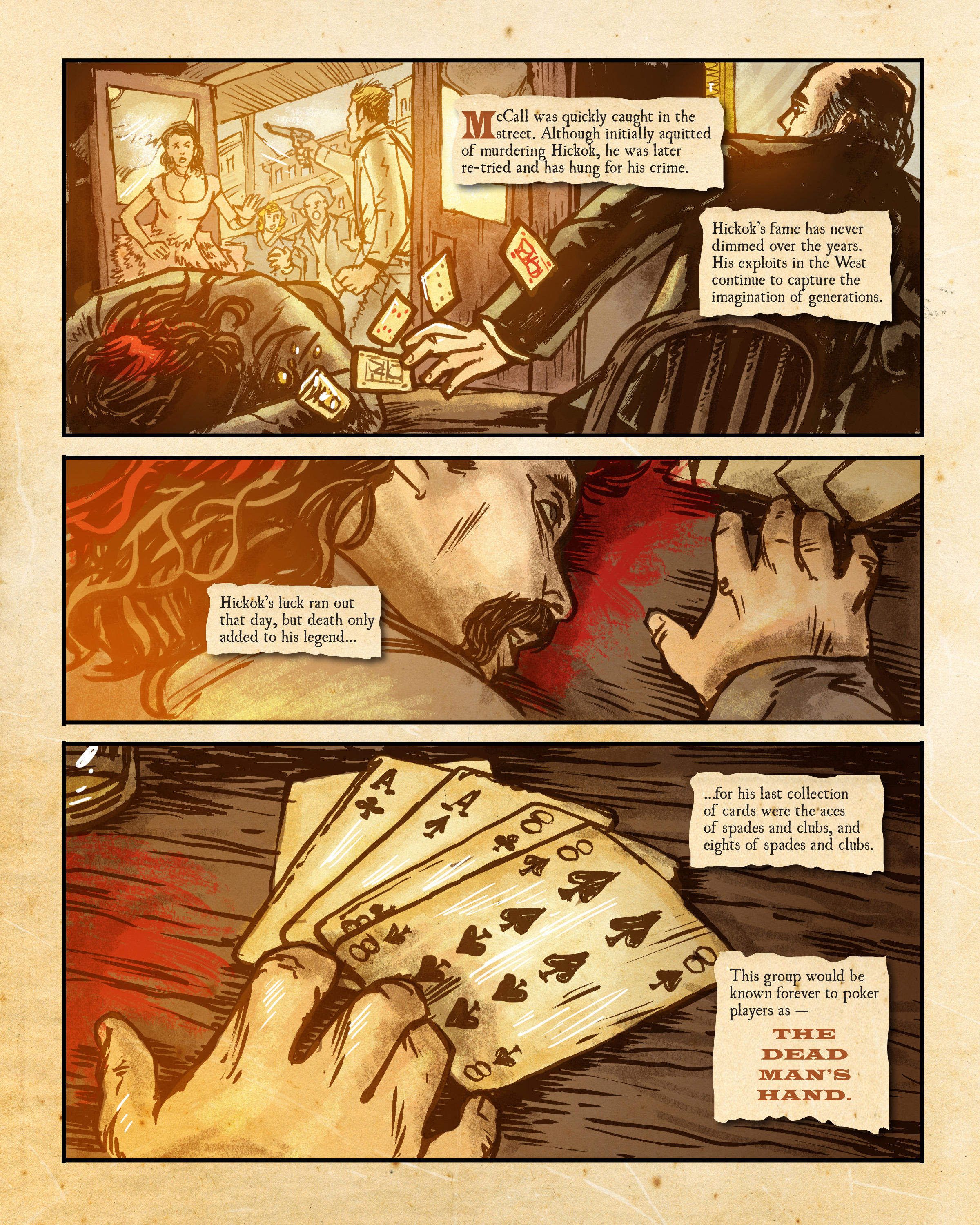Something that has always struck me as odd is this panel, the cutaway we get as Achilles shoots Bill in the back. We see the cards go flying and the sound of the gunshot. Moore is precise in his scripts and would have told Chris Sprouse exactly which cards to illustrate. But why these cards?
Charming, magnetic and often quite attractive, the Queen of Hearts has an innate ability to have favorable influence over others. The “Mother of Higher Love” commands powerful emotions of empathy and compassion with a flair for the dramatic, a potent combination that makes this card, when in a tight spot, prone to excitability or moodiness.
I think this represents the love Bill feels for Jessie.
Next up is the Six of Clubs. Again, according to The Cards of Life:
Finding and aligning with truth is the highest expression of the Six of Clubs. They represent the power, and the karma, of the spoken word. When they are meticulous with their words and thoughts, positive karma flows. Conversely, being less than honest brings consequences of that negative energy as well. Finding one’s truth and living by it, opens limitless possibilities for constructive contribution to life. Six of Clubs people are natural way-showers, light bearers, messengers, and often feel called to share their truth with others.
Until the Six of Clubs finds their truth, they can feel directionless and adrift. A classic procrastinator, the Six of Clubs can struggle to find their purpose and direction in life.
With such power, however, comes responsibility. ...[L]earning the true meaning of power, and how it can corrupt the holder, is a life lesson for one who seeks their true purpose. Once their direction in life is clear, Six of Clubs people have all the innate resources to make a positive contribution to life whether it’s within their immediate circle of influence or on a larger, global scale.
I take this to be Bill, who when he was living honestly, was a force for good. He was well liked and respected. However, when he became corrupted and changed time, terrible things happened.
Then comes the Ace of Spades. The Cards of Life:
The Ace of Spades is the most spiritual card in the deck. It is the symbol of ancient mysteries... and the card that represents transformation.
It's also long been known in many traditions as the death card.
Finally comes the Two of Hearts. The Cards of Life:
Born into the Venus/Neptune position in the Master Life Script, the Two of Hearts comes to the world with a concept of ideal love and spends much of their life seeking it. They appreciate their friendships and make others feel appreciated and valued. Evident by their words and deeds, the focus is on the other. Often called the “sweetheart card,” they are pleasant and amiable people. Reality can at times be a harsh teacher so when the inevitable breach in the idealized relationship with friends or lovers occurs, the Two of Hearts feels more severely the dashing of their dreams rather than the actual unkindness.
And this is Future Woman, who has to pretend to be Jessie, who loves Bill as a friend, who has to see his face as he dies. The death of her ideal is the strongest felt blow.
Anyway, maybe this is what Moore meant, maybe not. Maybe it didn't mean anything other than the legends about Wild Bill's famous dead man's hand were untrue. Maybe reality is still not what it's supposed to be.
As with reading Tarot, ultimately it's in how the story is heard and processed and chosen to mean that gives it its power.
If you'd like a more traditional reading of the death of Hickok, there's this one from PokerStrategy.com:









